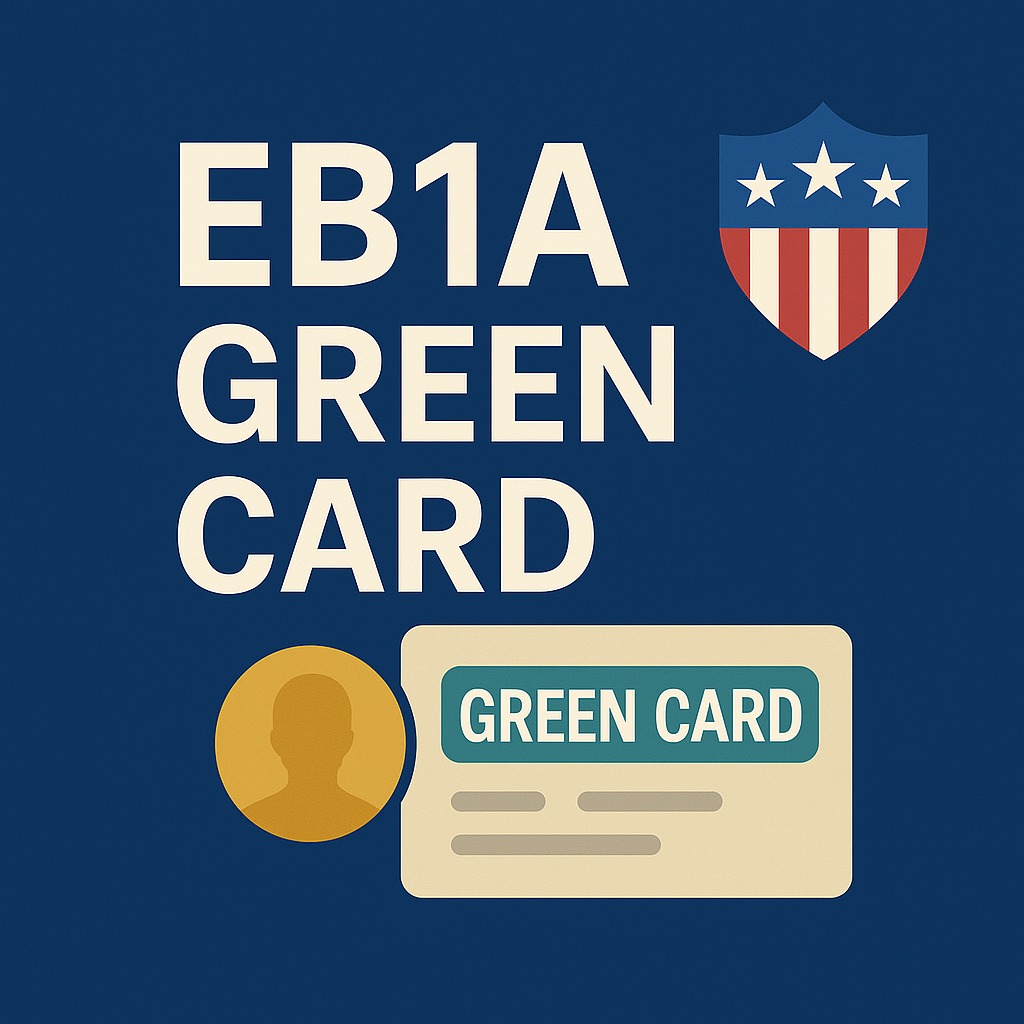For individuals with extraordinary abilities in science, arts, education, business, or athletics, the EB1A visa provides a prestigious path to permanent residency in the United States. Known for its high standards and self-petition process, the EB1A visa is especially attractive to professionals at the top of their fields. As immigration policies continue to evolve, understanding the 2025 EB1A visa requirements becomes essential for potential applicants aiming to secure their future in the U.S.
In this article, we break down the latest EB1A criteria into simple, actionable steps to help you navigate the application process with confidence.
What Is the EB1A Visa?
The EB1A visa falls under the Employment-Based First Preference (EB-1) category. It is designed for individuals who can demonstrate extraordinary ability through sustained national or international acclaim. Unlike many other employment-based visas, the EB1A does not require a job offer or labor certification, making it a powerful route for self-driven professionals.
Step 1: Understanding the Core Eligibility Criteria
To qualify for an Eb1a Green Card, applicants must meet three out of ten regulatory criteria or show evidence of a one-time major achievement, such as a Pulitzer, Oscar, or Olympic medal.
These ten criteria are:
- Receipt of lesser nationally or internationally recognized prizes or awards
- Membership in associations that require outstanding achievements
- Published material about you in professional or major trade publications
- Participation as a judge of others’ work in your field
- Original contributions of major significance
- Authorship of scholarly articles
- Work displayed at artistic exhibitions or showcases
- Leading or critical role in distinguished organizations
- High salary or remuneration compared to others in your field
- Commercial success in performing arts
If you're aiming for an Eb1a Green Card, it's essential to carefully gather evidence and match your accomplishments to at least three of these criteria. Presenting your achievements clearly and persuasively can significantly increase your chances of approval.
Step 2: Building a Strong Evidence Portfolio
In 2025, USCIS continues to place a high emphasis on quality over quantity. When applying for an Eb1a Green Card, it is not enough to simply list accolades. You must provide compelling documentation that demonstrates the influence, impact, and recognition of your work within your industry.
When preparing your application:
- Include letters of recommendation from recognized experts in your field.
- Provide translated, certified copies of international awards or publications if necessary.
- Showcase any press coverage, media articles, or features that highlight your work and its impact.
For an Eb1a Green Card, it's critical that your evidence tells a story of consistent excellence and influence. USCIS adjudicators are trained to assess both the substance and context of your achievements, so clarity and organization are key.
Step 3: Filing the Petition (Form I-140)
Once you’ve gathered your documentation, the next step is filing Form I-140 (Immigrant Petition for Alien Worker). This form is submitted to the U.S. Citizenship and Immigration Services (USCIS) and serves as the official petition to request classification under the EB1A category.
Key points to keep in mind:
- You can self-petition, meaning no employer sponsorship is required.
- Include all supporting documentation with your I-140 form.
- Pay the required filing fee and ensure all paperwork is accurate and complete.
Step 4: Waiting for Priority Date and Filing Adjustment of Status
If you're already in the U.S., and your priority date is current, you can file Form I-485 for adjustment of status at the same time as Form I-140 (known as concurrent filing). If you're outside the U.S., you will go through consular processing once your petition is approved.
Make sure to:
- Monitor the Visa Bulletin issued monthly by the U.S. Department of State.
- Submit biometric data and attend any required USCIS interviews.
Step 5: Final Decision and Green Card Issuance
Once your I-485 is approved (or your immigrant visa issued at a U.S. consulate), you will receive your green card—formally establishing your permanent residency in the United States under the EB1A category.
Approval rates for EB1A petitions are relatively high for well-prepared applications. However, failing to meet the evidentiary burden can result in delays or denials. Carefully planning each step and maintaining comprehensive records can make a crucial difference in the outcome.
Final Thoughts: Is the EB1A Visa Right for You?
The Eb1a Green Card offers a streamlined, employer-free path to permanent residency for those who truly stand out in their professions. Whether you are an award-winning researcher, a world-class athlete, or an innovative entrepreneur, this visa can be a game-changer in your career journey.
Understanding the Eb1a Green Card requirements and following a systematic approach in 2025 will position you for success. While the process may seem complex, the rewards of securing a U.S. green card through your own merit are well worth the effort.
H3: Quick Checklist for 2025 EB1A Visa Applicants
- ✅ Meet at least 3 of 10 USCIS criteria or show evidence of a one-time major award
- ✅ Collect strong, well-documented proof of achievements
- ✅ File Form I-140 with all required supporting evidence
- ✅ Stay updated with Visa Bulletin for I-485 or consular steps
- ✅ Be ready for follow-up requests or interviews
If you're unsure about any stage of the application, consider consulting with a professional to evaluate your profile and help build your case. The EB1A visa is one of the most empowering routes to the American dream—make sure you approach it fully prepared.





Comments